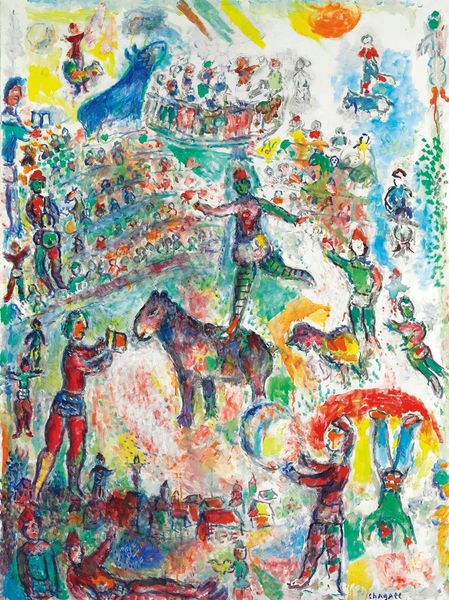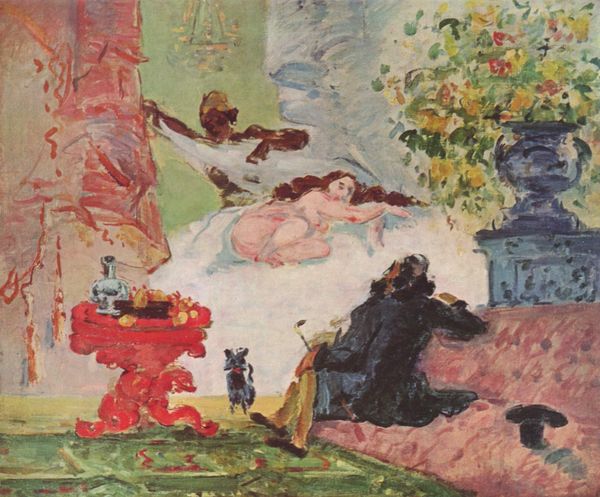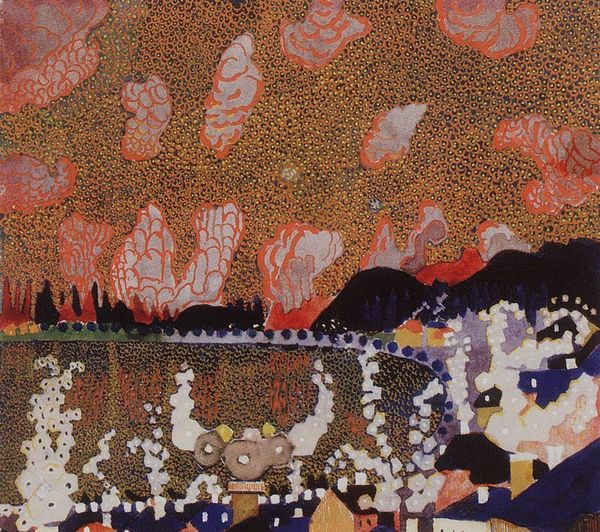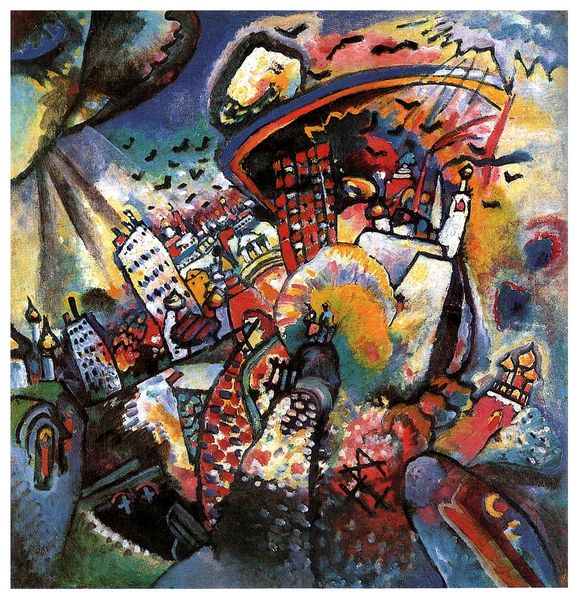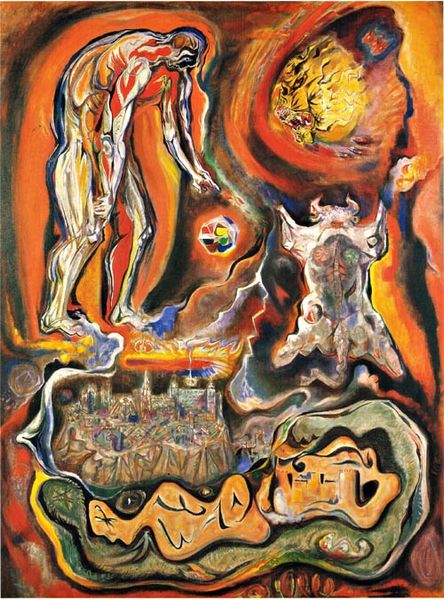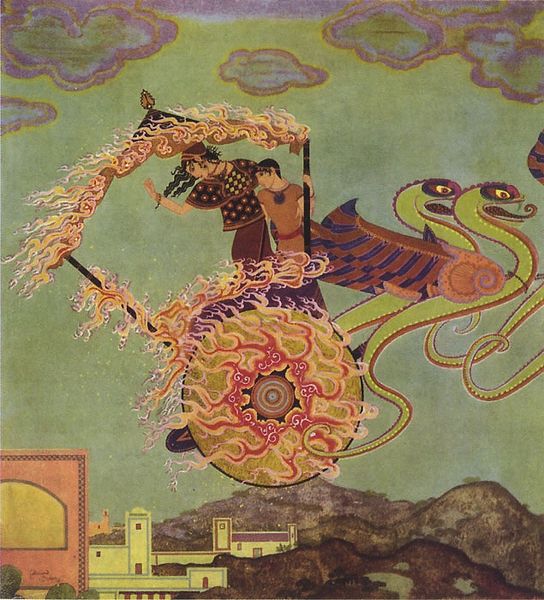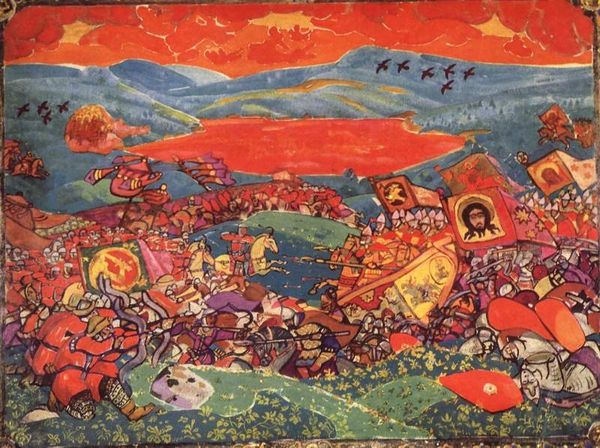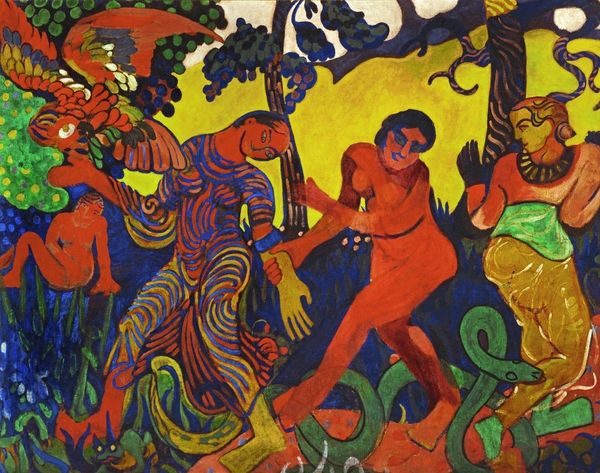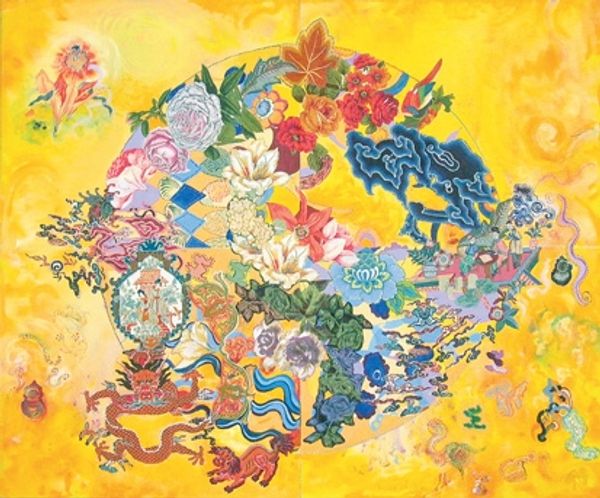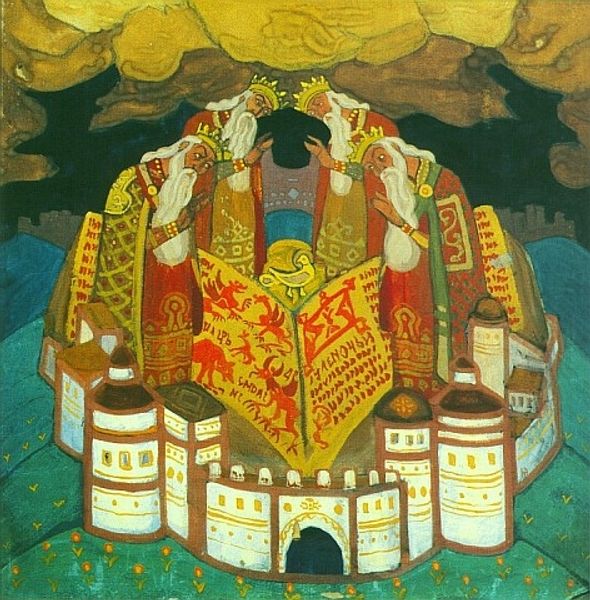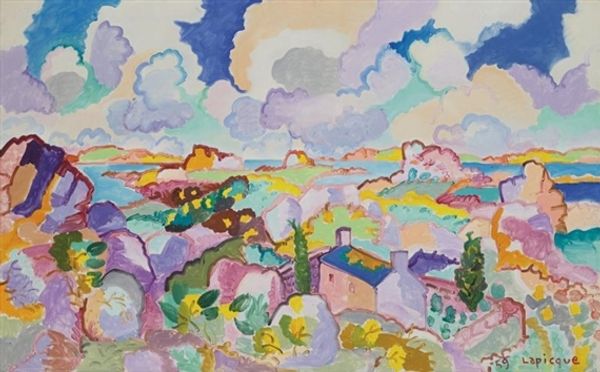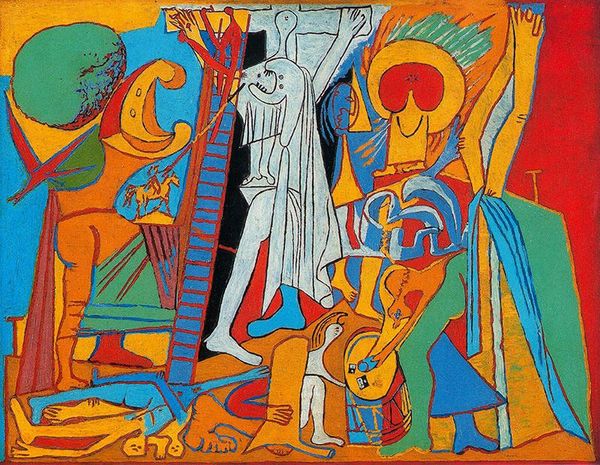
tempera, painting, acrylic-paint, mural
#
medieval
#
narrative-art
#
tempera
#
painting
#
war
#
landscape
#
acrylic-paint
#
figuration
#
geometric
#
horse
#
men
#
russian-avant-garde
#
painting art
#
history-painting
#
mural
Dimensions: 78 x 73 cm
Copyright: Public domain
Curator: This tempera painting, "Conquest of Kazan," was completed by Nicholas Roerich in 1914. Look at the framed moment Roerich captures here. Editor: The first thing that strikes me is the vibrant yet somewhat muted color palette. It feels almost like looking at a tapestry—very detailed and materially rich. Curator: Indeed. Roerich's works often reflect a deep engagement with Russian history and spirituality, particularly its medieval era. Consider how the conquest narrative aligns with the rise of national identity at the time. Editor: It’s also intriguing to consider the work's making, the choices in media here. Tempera on canvas offers a particular surface quality—how it interacts with light and pigment impacts the viewer's experience. He could also be employing an acrylic, so either one speaks to available materials at the time. Curator: His artistic style blends symbolism with a distinctly modern approach, influenced by the Russian Avant-Garde movement, making it distinct from other history paintings of the era. You can almost sense an undercurrent of socio-political commentary as you move from one figure to the other. Editor: Absolutely, and the arrangement of figures seems carefully calculated to create rhythm. I'm thinking about production. Each figure is carefully positioned within the whole. One may feel they're meant to read war a different way, maybe away from its brutalities and closer to its symbolic power. Curator: The placement of Kazan under ominous clouds and a divine sword overhead speaks volumes about the perceived justifications for conflict. I wonder, what did audiences then feel about the politics? Editor: I see Roerich building beyond craft. The materiality allows Roerich to speak beyond one historical context by building cultural relevancy. It reminds us about production, about how war becomes aestheticized and consumed in ways we don't often consider. Curator: It is interesting how it can provide insights to our role within history today. It encourages reflections on power. Editor: It moves the way we examine art. It reminds us about process, labor and how each shape meaning.
Comments
No comments
Be the first to comment and join the conversation on the ultimate creative platform.
